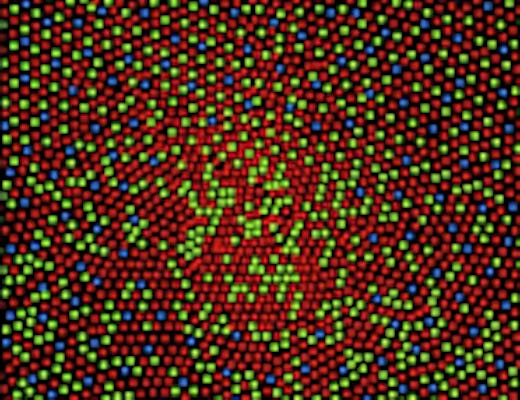Using Light- and Colorimeters for Spot Measurements
Modern displays are subject to optical variations at different stages in the production process. Color and luminance quality can fluctuate due to light-emitting diode (LED) batch inconsistencies or quirks, but this does not necessarily constitute component failure. This could merely be a product of the rapid-throughput production cycles and the complex arrangements of LED backlights, polarizers, and color filters in display products. Some variation at the development stage is to be expected. In fact, these variations regularly inform the necessary optical adjustments before a product is consumer-ready.

Light- and colorimeters acquire the variation data through spot measurements, where a single (representative) spot is analyzed respectively to the rest of the display. Information pertaining to display luminance and color uniformity amongst batches can be obtained from both large and small displays by dedicated light- and colorimeters. This is performed by analyzing the central point of the display, or several spots across the surface to provide referential information about uniformity over different spots. One or more devices may be used throughout this process, depending on the measured spot size and display size.
To obtain the broadest possible range of relevant display information, spot measurements are regularly carried out using a combination of colorimeters which are calibrated against other optical measurement devices such as spectrometers. Luminance and flicker-only measurements can also be carried out using a light meter. This article will explore the performance of spot measurements using measurement equipment and associated accessories in more detail:
Spot Measurement Analysis Using Colorimeters
Display development and manufacturing professionals commonly carry out accurate spot measurements tests to ensure that products perform to advertised specifications and have a perfect inter-device color rendering repeatability. These tests include color analysis at one or more spots, white point adjustment, flicker adjustments and response time determination.
The Prometheus Colorimeter series is alike the successful Hyperion and MSE series tri-stimulus colorimeter equipped with a lens system that captures data from a specific spot on a screen. Typical colorimetric data can be acquired according to CIE 1931 XYZ and Yxy as well as flicker data according to JEITA and VESA flicker standards.
For more basic display analysis that only requires luminance or flicker measurements, the Asteria series equipped with a collimating lens offers the best price-performance ratio. Offering absolute luminance according to V(λ) and flicker data including standard metrics such as flicker percentage and index as well as JEITA and VESA flicker methods. With its high sample rate of 186.567 samples per second, this compact device can quickly and reliably perform in-line spot measurements of displays, providing insights into batch consistency and informing any necessary adjustments.
This light meter can be combined with multiple spectrometers or colorimeters for quick pre-inspection and extended capacities.
Light- and Colorimeters from Admesy
Admesy is a leading supplier of optical measurement equipment for a range of applications, from laboratory testing to industrial manufacture with demanding commercial requirements. Our light- and colorimeters are equipped to provide rapid insights into the optical intensity of displays of varying sizes, with full-integration through numerous operating systems and high degrees of functionality with complex arrays of measurement devices.
If you would like any more information about performing spot measurements with our light- and colorimeters, please do not hesitate to contact us.

